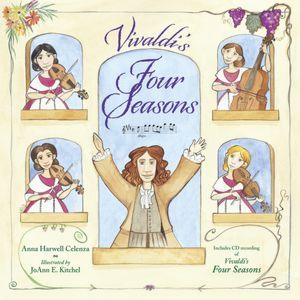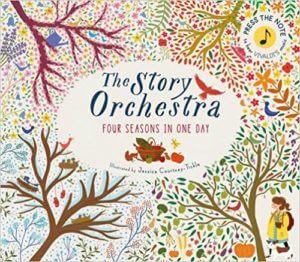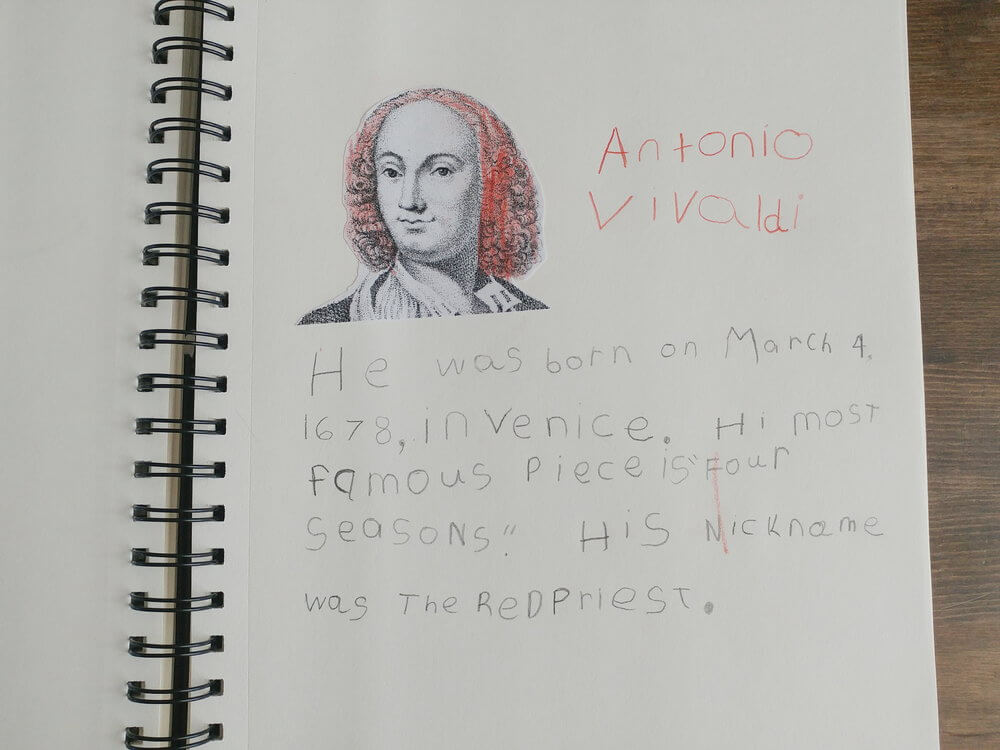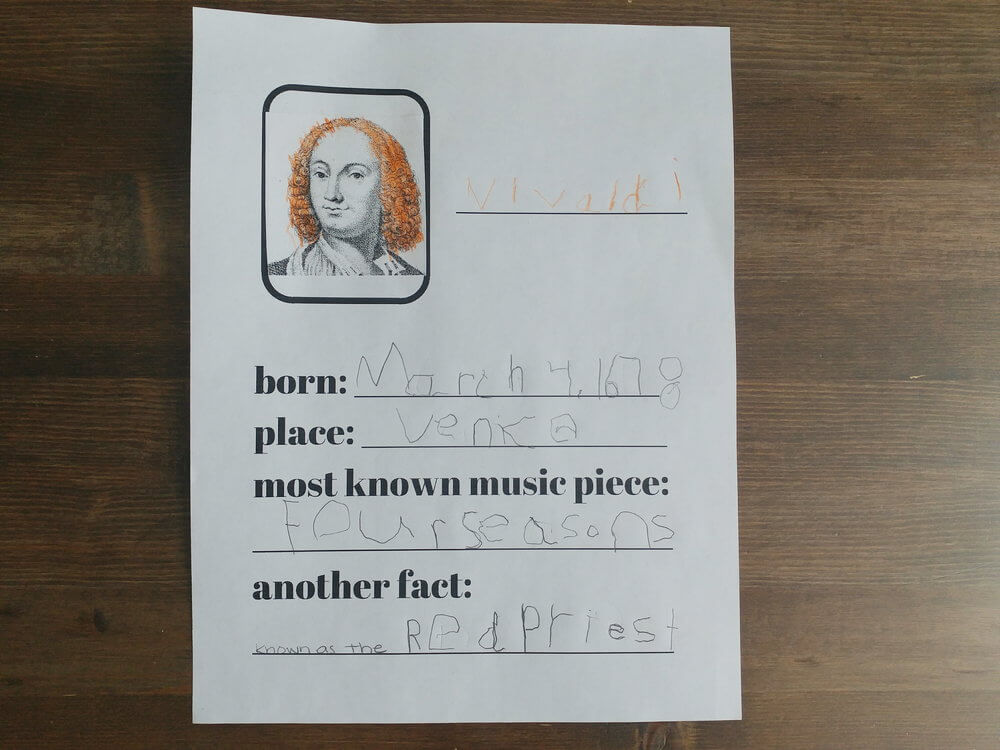COURSE – Vivaldi – A Composer Unit Study
Introduction

Hi, I’m Chantel, welcome to the Vivaldi Composer Study!
Antonio Vivaldi was one of the first composers we learned about and his beautiful music has really stuck with us. In this unit study I will be sharing our favorite Vivaldi resources with you. I wadded through a mass of resources, some great and some not so much so you don’t have to; this way you can just skip to the good stuff! If we come across any other great Vivaldi resources as time goes on I will be sure to add them here.
Enjoy the unit study!
Unit Outline
Here I’ve created a sample unit outline for those who like schedules and a plan to follow. I am not personally one of those people, and if you are like me and prefer to just go through the resources at your own pace without guidance you are more than welcome to do so. But, for those who like a plan, I’ve created this for you.
I have broken the plan down into “sessions”, each session is generally a day. Feel free to do the sessions all in a row covering a week (or more if you do the extended learning) or space them out over the course of a few weeks (my preferred way). If you do space them out I would suggest making sure you still listen to some of Vivaldi’s music on days when you aren’t doing a session.
BEFORE THE SESSIONS
Before you dive into the sessions make sure you borrow the books from the books section out from your library or purchase them if you prefer.
SESSION ONE
Watch one or both of the Vivaldi video biographies in the Antonio Vivaldi section.
Introduce Four Seasons by listening to one of the seasons in the music section, I would suggest starting with the season you are currently in, make note of any changes from the beginning of the song to the middle and end.
Read I, Vivaldi.
SESSION TWO
Listen to the audio files about Vivaldi in the Antonio Vivaldi section.
Listen to a variety of Vivaldi’s works (though try to leave Four Seasons, we’ll dig into that one more in the next session), you can find his music in the music section.
Read the Vivaldi section in Lives of the Musicians.
SESSION THREE
Introduce the full Four Seasons starting with the video Why You Should Listen to Vivaldi’s Four Seasons in the music section. Then skip through Four Seasons to hear the difference of each of the seasons.
As you go about any quiet work throughout the day or the next while have Four Seasons playing in the background.
Read The Story of Orchestra: Four Seasons in One Day.
SESSION FOUR
Listen to Ring of Mystery and you can optionally read the book during this time as well.
This session can be broken up into multiple days. We enjoyed listening over lunch over the period of a few days.
SESSION FIVE
Read The Orphan Singer.
Create a notebooking page about Vivaldi.
OPTIONAL EXTENDED LEARNING
I have a section for optional extended learning, I would suggest doing as many of these as you enjoy! The idea is for your children to fall in love with Vivaldi’s music, if they aren’t enjoying it you could stop now and come back to it another time. If they are enjoying it, continue on with the extended learning ideas as well as the raising a composer section.
Books

We read though many Vivaldi books and these are the best of the best.
You’ll want to read through these as you study Vivaldi so I would suggest requesting all of these from your library before you begin your study.
You will notice that these are picture books, I have personally found that this has been the most interesting way for my children (and even myself) to learn about composers, especially ones that lived so long ago that they don’t have a whole lot of details recorded about their life like they do with the more recent composers.

LIVES OF THE MUSICIANS: GOOD TIMES, BAD TIMES (AND WHAT THE NEIGHBORS THOUGHT)
It’s no secret that Beethoven went deaf, that Mozart had constant money problems, and that Gilbert and Sullivan wrote musicals. But what were these people–and other famous musicians–really like? What did they eat? What did they wear? How did they spend their time? And–possibly most interesting of all–what did their neighbors think?
Discover the fascinating and often humorous stories of twenty famous musicians–people of all shapes, sizes, temperaments, and lifestyles, from various countries and historical periods. Beginning with Vivaldi and ending with Woodie Guthrie, Lives of the Musicians brings musical history to life!

We will be referencing this book later! Make sure you grab a copy!
VIVALDI’S RING OF MYSTERY
Vivaldi, Venice and violins: all three are celebrated in Vivaldi’s Ring of Mystery, a compelling mystery story about an orphan girl in the early 1700’s who is in search of her roots. A central clue to the mystery is a missing Stradivarius violin that the Duke of Cremona has brought to Vivaldi’s school of the Pieta in the hopes of finding his long lost grandchild. You’ll have to watch the story unfold to learn its conclusion!

I, VIVALDI
In this dynamic picture-book biography, told as if by Vivaldi himself, the famous musician’s energetic personality and steadfast dedication to music come alive.
Despite his mother’s vow for him to become a priest, young Vivaldi is only interested in music. He soon grows from a feisty boy who wants to play the violin into a stubborn young man who puts his musical training ahead of his studies for priesthood.
Beautiful, ornate artwork portrays the spirit and splendor of Vivaldi’s hometown, Venice. A historical note, musical score, and glossary will help readers more fully appreciate Vivaldi’s life and musical genius.

THE ORPHAN SINGER
The Dolcis are poor and cannot afford to train their daughter’s beautiful voice, so they give her to the”ospedalo,” where she is raised as an orphan and trained for the opera.

VIVALDI’S FOUR SEASONS
In eighteenth-century Venice, Italy, the finest musical performances are heard at an orphanage called the Ospedale della Pieta. Hidden from the audience is an orchestra of young orphan girls, some with physical disabilities and illnesses.
Padre Antonio Vivaldi, their music teacher, is inspired by the talented and determined young girls. When Vivaldi and his students are separated, Vivaldi is inspired to compose a set of concertos that mark the passing of time–the great baroque masterpiece entitled The Four Seasons.
Back matter includes an author’s note with further historical and biographical information, as well as the text of the sonnets that accompany the music.

THE STORY OF ORCHESTRA: FOUR SEASONS IN ONE DAY
Discover what it would be like to travel through the four seasons in one day, following a little girl called Isabelle and her dog, Pickle, as they take on the adventure of a lifetime. As a sign of the changing seasons, Isabelle carries a little apple tree with her, and we see it bud, blossom and lose its leaves. Each spread features a musical note to press and a 10 second sound clip from the original score of Vivaldi’s Four Seasons. Illustrated by artist Jessica Courtney-Tickle, the book also features a biography of Vivaldi at the back along with a guide to the music.
Who is Antonio Vivaldi?
A longer biography (13 minutes):
Vivaldi’s Music
Here you can listen to some of Vivaldi’s work (you can listen to the full Vivaldi playlist on Spotify here).
Ring of Mystery
The Ring of Mystery is a book and audio drama. We thoroughly enjoyed the audio drama, it was a great way to learn a little more about Vivaldi and listen to his music.
Vivaldi’s music comes to life in this fictitious story. It is based on Vivaldi’s work in an orphanage where he taught girls to play violin and weaves a thread of fantasy as Katarina, a new girl to the orphanage is searching for her roots. Throughout the story there are pieces from more than 25 of Vivaldi’s works.
Excepts from his works include:
- Concerto for 2 Trumpets in D Major
- String Concerto
- Spring, Mvmt. I
- Piccolo Concerto
- Autumn, Mvmt. I
- Guitar Sonata
- Concerto in A Minor
- Winter, Mvmt. II
- Guitar Concerto, Mvmt. II
- Caldara Song
- Guitar Concerto, Mvmt. III
- Flute fragment from Il Gardelino
- Double Violin Sonata
- Trumpet Concert, Mvmt. I
- Concerto Con Molti
- Violin Concerto in A Minor, Mvmt. II
- La Notte, Mvmt. I
- Summer, Mvmt. III
- Autumn, Mvmt. II
- Winter Fragment
- Summer, Mvmt. III
- Il Gardelino, Mvmt. II
- Caldara Song
- Violin Sonata in F Major
- Piccolo Concerto, Mvmt. I
- Trumpet Concerto, Mvmt. III
- Double Orchestra Concerto
- Alla Rustica
Notebooking
After we’ve learned about a composer and listened to their music I prefer to document our work by notebooking. It’s a great way for kids to think back on what they’ve learned and reference back to. I personally like having a tangible sign that we learned something, especially since I need to send in some work samples to our school division for my end of the year reporting.
Some ideas of what can be included in your notebooking page:
- a picture of the composer (drawn or a print out)
- their name
- when they were born
- where they were born
- where they lived most of their life
- when they started composing
- their most known piece of work
- other interesting facts about the composer
- your child’s favorite piece by that composer
While I prefer notebooking younger children may benefit from a fill-in-the-blank type page to reduce the amount of writing they need to do. You can download this type of page here or you could write parts of the information and have them fill in the key points.


Extended Learning
Here are a couple of other resources I’ve found that you may enjoy!
THE PIANO GUYS
The Piano Guys took pieces of Winter and mixed it together with the oh so popular Let it Go for a truly unique song, and their videos are always amazing, both the camera work and the music. Make sure your kids have listened to Winter at least few times on its own first so they can recognize those parts of the song. You could even make it into a game and tell them this is a blend of two songs and see if they can tell you which two.
More of The Piano Guys! This time they’ve taken the Bourne Soundtrack and paired it with Vivaldi’s Double Cello Concerto.
SPRING ON PIANO
This video is set up similar to Guitar Hero, it’s another fun way to learn to play Spring.
Raising a Composer
Have a child that wants to compose their own music? Here are some resource for them!
MUSICAL INSTRUMENTS
Having a variety of musical instruments available is important. We have a keyboard, ukulele, recorder (not sure I would recommend this!) and at times have had a drum set. My kids use our keyboard more than any other toy they have, my daughter uses it to write her own songs and plunk around and sometimes they will turn on the pre-recorded music and have a dance party.
Compose Your Own Music – Classical Kids
On this site kids can pick notes to create their own musical masterpiece. There are both beginner and advanced options.
Conclusion
I hope you and your children have enjoyed this composer study on Antonio Vivaldi!

